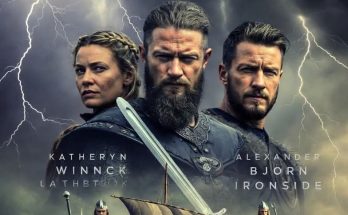In an era where the music industry thrives on the unexpected, the announcement that truly stuns the global populace is a rare gem. For weeks, cryptic social media posts—a fleeting shot of a familiar denim jacket from the ‘90s next to a contemporary platinum microphone, a shared audio snippet blending iconic harmonies with a modern hip-hop beat—had sent fan theories into a frenzied spiral. The digital realms of ARMY and Backstreet Boys fans, two of the most formidable forces in pop culture, became a collaborative detective agency, piecing together clues that seemed too fantastical to be true. The speculation, however, was merely a prelude to the seismic shockwave that would follow. On a seemingly ordinary Tuesday morning, the world was officially introduced to a new paradigm in pop music history: BTS and the Backstreet Boys are embarking on a joint world tour in the summer of 2026.
The announcement, made via a stunningly produced cinematic trailer that interwove the groups’ most legendary music video aesthetics with a powerful, orchestral-medley version of “I Want It That Way” and “Dynamite,” did more than break the internet; it temporarily broke the collective mind of the global populace. This is not a co-headlining festival slot or a one-off charity performance. This is “The Bridge: A New Legacy,” a fully-fledged, meticulously planned stadium tour spanning five continents, a venture that promises to dissolve the generational divide and unite two distinct epochs of pop music under a single, blinding spotlight. The concept itself is audacious. It posits that the boy band, as a cultural phenomenon, is not a transient trend but a timeless archetype, one that evolves yet retains its core function: to create community, to provide a soundtrack to lives, and to inspire a devotion that transcends language and borders.
The logistics of such an undertaking are as mind-boggling as the concept itself. How does one craft a setlist that does justice to the record-breaking, genre-defying Korean discography of BTS while also honoring the quintessential, record-breaking, era-defining American pop anthems of the Backstreet Boys? Early reports from insiders suggest a show structured not as a battle for stage time, but as a seamless narrative. The tour’s title, “The Bridge,” is its guiding principle. Imagine a show that opens not with a bang, but with a moment of profound connection—the seven members of BTS and the five members of Backstreet Boys standing on a stage designed to resemble a vast, celestial map, their voices blending in a stripped-down, acoustic segment. Picture the haunting melody of “Spring Day” giving way to the poignant chords of “Show Me the Meaning of Being Lonely,” creating a medley on the universal theme of loss and longing. Envision the explosive energy of “IDOL” colliding with the unapologetic party vibe of “Everybody (Backstreet’s Back),” creating a percussive, high-octane celebration that could power a small city.
The revealed dates and major cities read like a bucket list for any global music fan. The tour is slated to kick off with a monumental, three-night stand at the Rose Bowl in Pasadena, a venue synonymous with legendary live performances. From there, it will traverse North America, hitting iconic venues like MetLife Stadium in New York, Soldier Field in Chicago, and SoFi Stadium in Los Angeles. The European leg is equally staggering, with dates confirmed at London’s Wembley Stadium, Paris’s Stade de France, and Berlin’s Olympiastadion. The tour will then make history in Asia, with performances at Tokyo’s National Stadium, a groundbreaking show in Seoul’s Gocheok Sky Dome, and stops in Singapore and Bangkok. The itinerary also includes stops in South America and Australia, ensuring this is a truly global event, a testament to the worldwide reach of both groups.
Beyond the spectacle, the tour represents a fascinating convergence of business and cultural acumen. For the Backstreet Boys, this is a triumphant reaffirmation of their enduring legacy. It places them back at the absolute pinnacle of the global conversation, not as a nostalgia act, but as active, vital contributors to the contemporary music landscape. Their harmonies, once the defining sound of the late 20th century, are being introduced to a new, digitally-native generation through the most powerful conduits imaginable: BTS. For BTS, currently in a period of individual musical exploration as they fulfill military service obligations, the 2026 tour marks a grand, unified return. It is a strategic masterstroke that allows them to re-conquer the global stage while simultaneously paying homage to the artists who paved the way for the “idol” model they perfected. It’s a statement that their influence is so monumental that they can share the stage with their predecessors as equals, creating a new chapter rather than simply following an old one.
The cultural implications are profound. This tour is a living, breathing case study in the evolution of fandom. ARMY, known for its highly organized, social-media-driven global network, and the long-standing Backstreet Boys fanbase, a community built through fan clubs and early internet forums, are now interacting, sharing memories, and creating a cross-generational dialogue. Parents who once had Backstreet Boys posters on their walls are now explaining the significance of “Larger Than Life” to their children, who are in turn teaching them the lyrical depth of BTS’s “Black Swan.” It is a beautiful, organic merging of histories, proving that the passion inspired by a boy band is a universal constant, regardless of the generation.
Of course, the tour is not without its chorus of skeptics. Some question the sonic compatibility, wondering if the hip-hop and R&B influences in both groups’ earlier work will be enough to bridge the apparent gap between stadium EDM-pop and intricate K-pop production. Others voice concerns about the sheer scale, wondering if any production, no matter how ambitious, can satisfyingly serve two artistic entities of such immense stature without one feeling short-changed. Yet, these very questions are what make “The Bridge” so compelling. The uncertainty is the point. This is uncharted territory. This is a risk, a leap of faith taken by two groups confident enough in their own art and respectful enough of each other’s to believe they can build something entirely new from their combined legacies.
As the summer of 2026 approaches, the anticipation will reach a fever pitch unlike anything the industry has witnessed. This is more than a concert tour; it is a cultural event, a historical marker. It is the moment the 90s and the 2020s shook hands on a global stage. It is the proof that great pop music is timeless, that the yearning for connection through melody and harmony is ageless, and that sometimes, the most shocking news is not one of division, but of glorious, harmonious union. When the lights go down in the Rose Bowl on that first night, and the first notes ring out, the world will be watching, listening, and believing in the power of a bridge built not of steel and concrete, but of rhythm, rhyme, and a shared, unshakeable love for the music.



